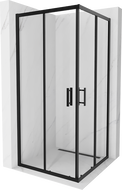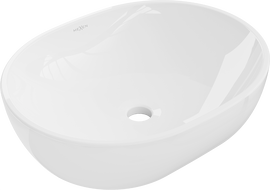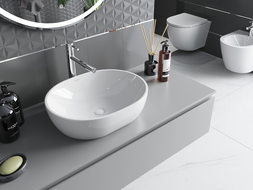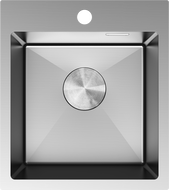
Installing a fan is an undeniable necessity to ensure proper ventilation in the bathroom and eliminate moisture and unpleasant odors. Ventilation openings must be present in every bathroom and kitchen. The choice of the appropriate device should be based on several important parameters to maximize the efficiency of ventilation.
Which fan is suitable for a windowless bathroom? What parameters should it have? Here are the key features of fans designed for enclosed spaces.
Bathroom fans and their efficiency
A fan should be sufficiently efficient to ensure adequate air exchange in the bathroom. It is recommended that the device guarantees an airflow of at least 50 cubic meters per hour (m³/h) or about 8 to 10 air exchanges per hour. This can be calculated by multiplying the volume of the bathroom by 10 to obtain the minimum required fan efficiency in m³/h.
In bathrooms with an area not exceeding 6.5 m2, so-called gravitational ventilation with a standard grill in the chimney should suffice. The size of the room determines the choice of the appropriate fan. In larger bathrooms, a more powerful fan that ensures better air circulation is preferable.
Bathroom fan noise levels
A bathroom fan should be quiet, especially if the bathroom is near a bedroom, children's room, or other areas where the noise of the fan could be disturbing. The ideal fan generates noise at a level no higher than 30 decibels (dB).
Fans equipped with additional features
Bathroom fans may be equipped with various additional features that enhance their functionality and user comfort:
- humidity sensor - a fan with a humidity sensor, as the name suggests, automatically turns on when the humidity level in the bathroom exceeds a set threshold. This is especially important in windowless rooms;
- timer - allows you to set the fan's operating time after turning off the light. The timer ensures that moist air will continue to be removed even after the user leaves the bathroom;
- motion sensor - the fan turns on when someone enters the bathroom and turns off after a certain time or lack of activity. A fan with a motion sensor is one of the most frequently chosen models.
Moisture resistance and high safety standards
The fan should have an appropriate degree of protection (IP) that ensures safety of use in humid conditions. Models marked IP45 or higher are generally installed in bathrooms.
Bathroom ventilation and energy efficiency
When choosing a fan for a windowless bathroom, it is worth paying attention to its energy efficiency. A model with an ENERGY STAR certification or a similar label can positively impact your wallet and ultimately result in savings on energy bills.
Which fan is essential for a windowless bathroom? Summary
Ventilation in bathrooms and kitchens is essential for maintaining a healthy environment, preventing structural damage, and ensuring the comfort and safety of users.
Bathrooms are places where large amounts of steam are generated every day due to showers, baths, and other daily hygiene activities. Without proper ventilation, excessive moisture can condense on walls, mirrors, and other surfaces, creating ideal conditions for the growth of mold and fungi. These organisms can trigger and exacerbate health issues such as allergies or asthma.
In summary, the choice of a fan for a windowless bathroom should consider the above criteria to ensure effective, quiet, and energy-efficient operation of the device. This way, the bathroom will remain dry, fresh, and free from mold and other problems associated with excess moisture.

















